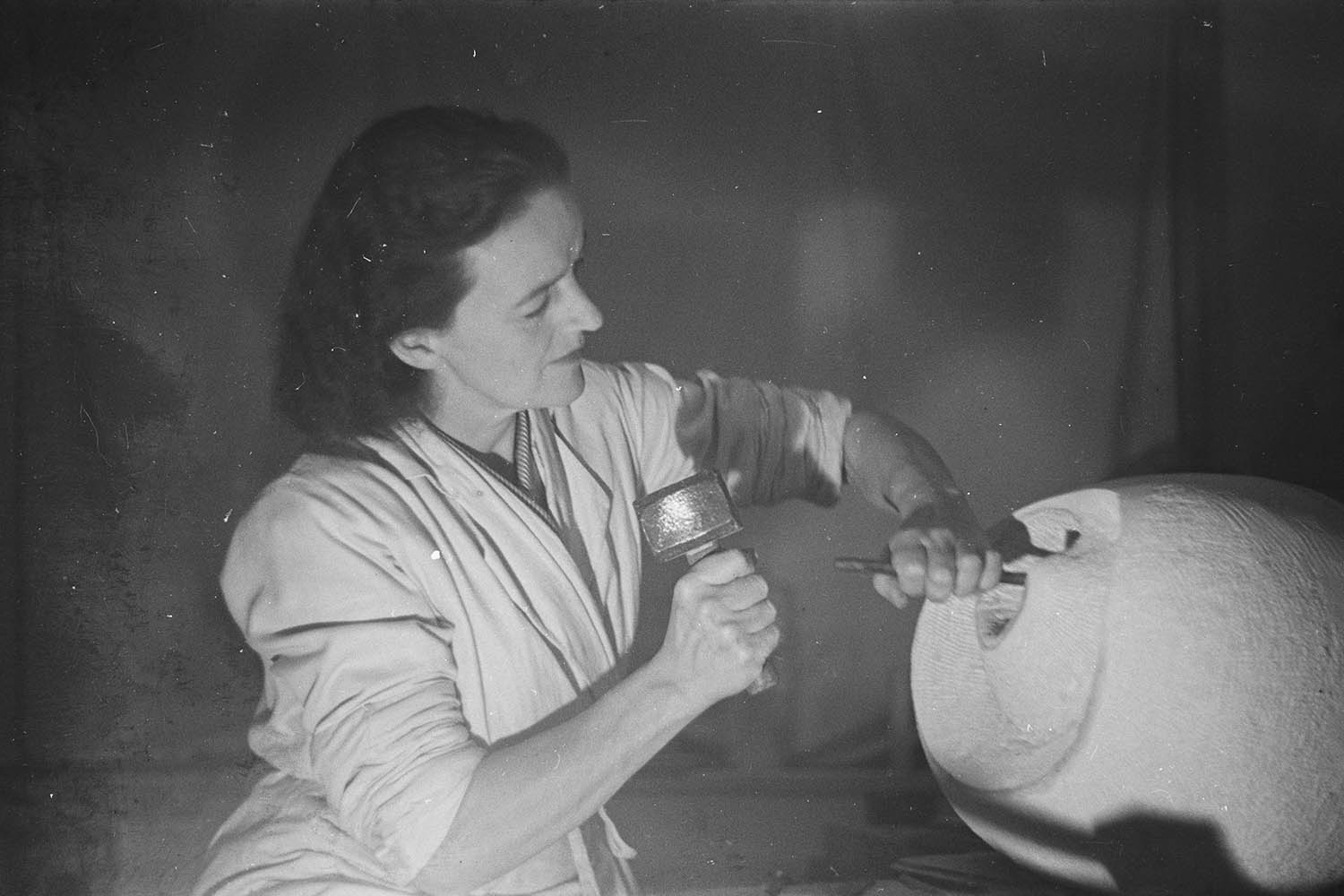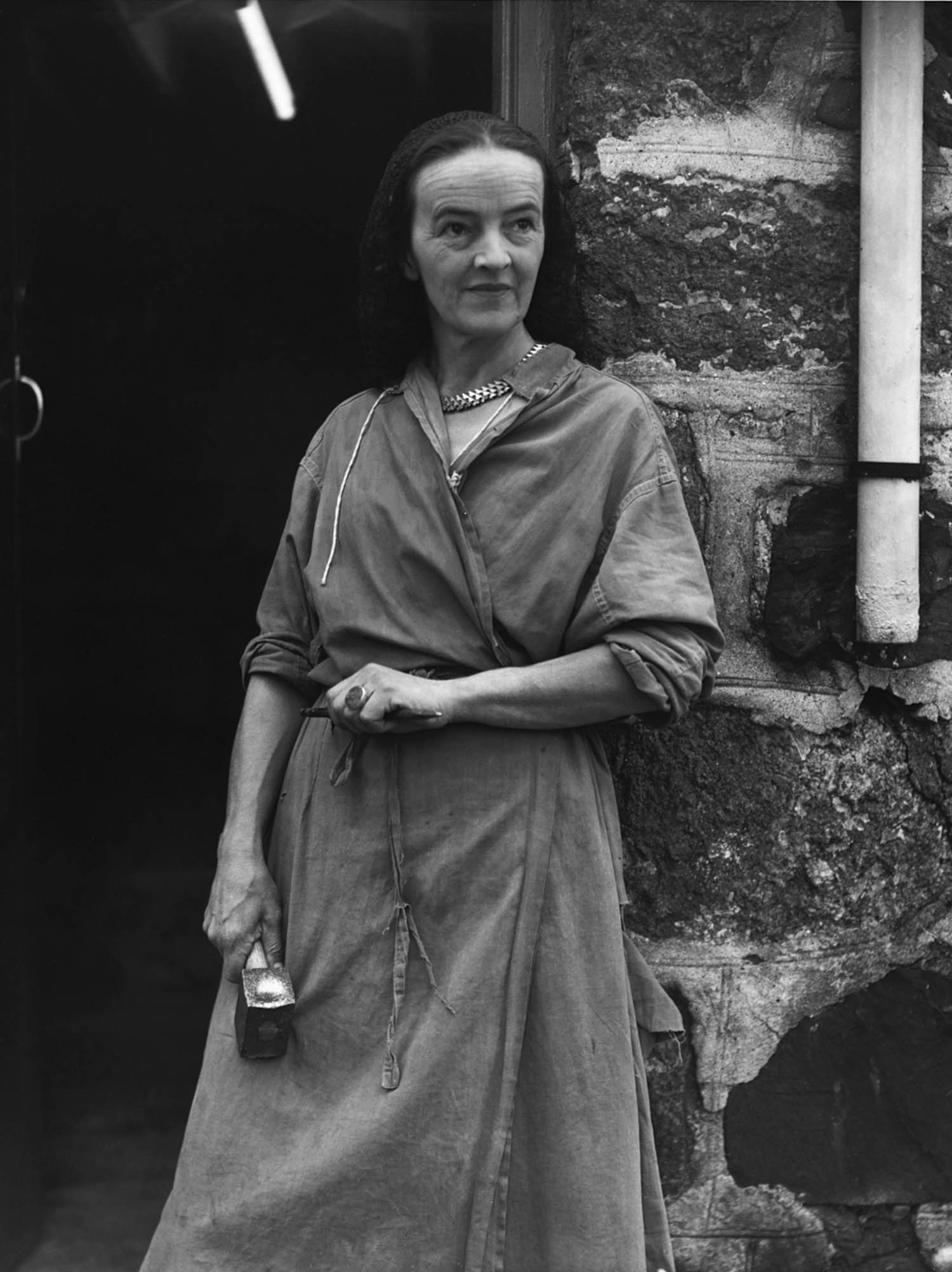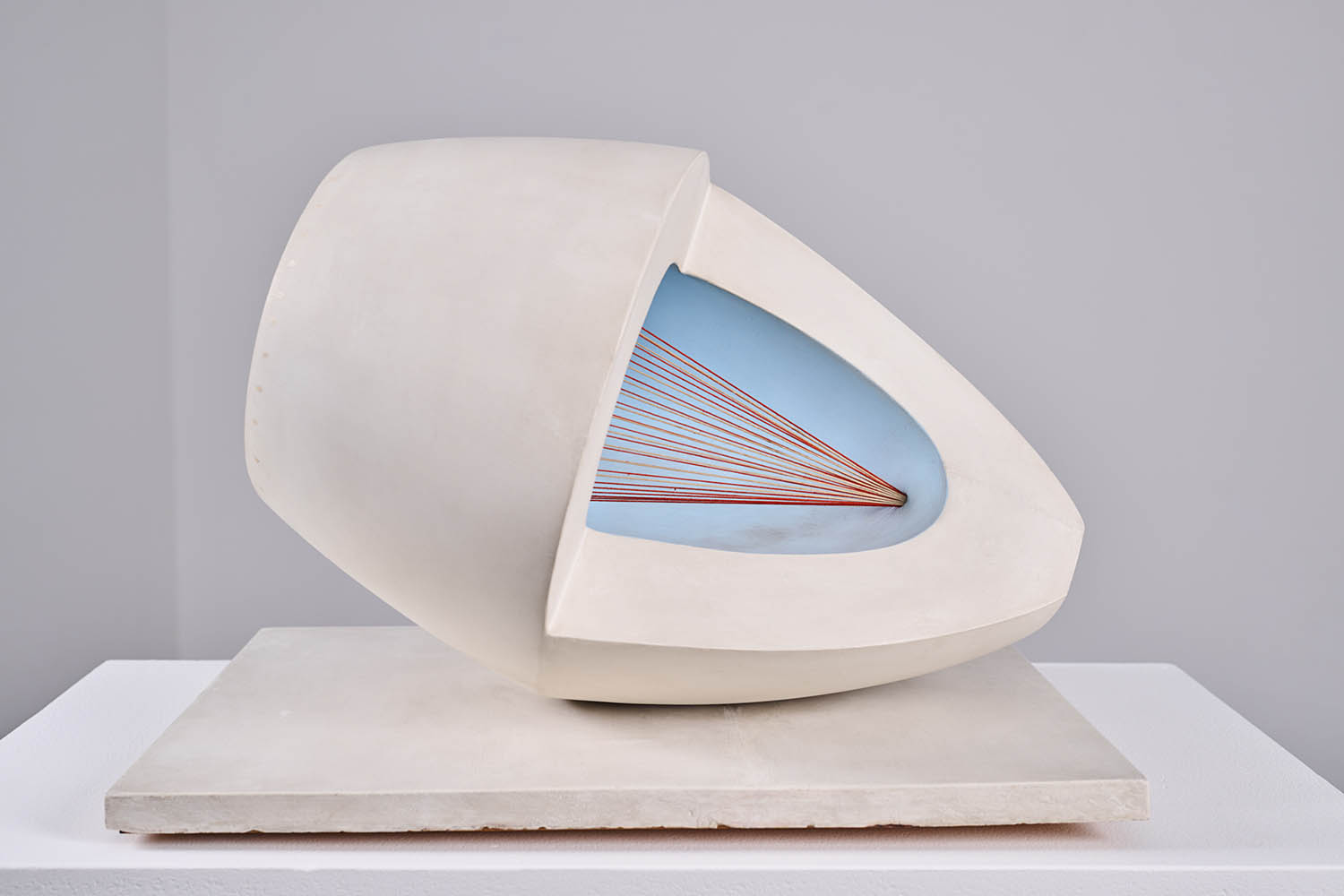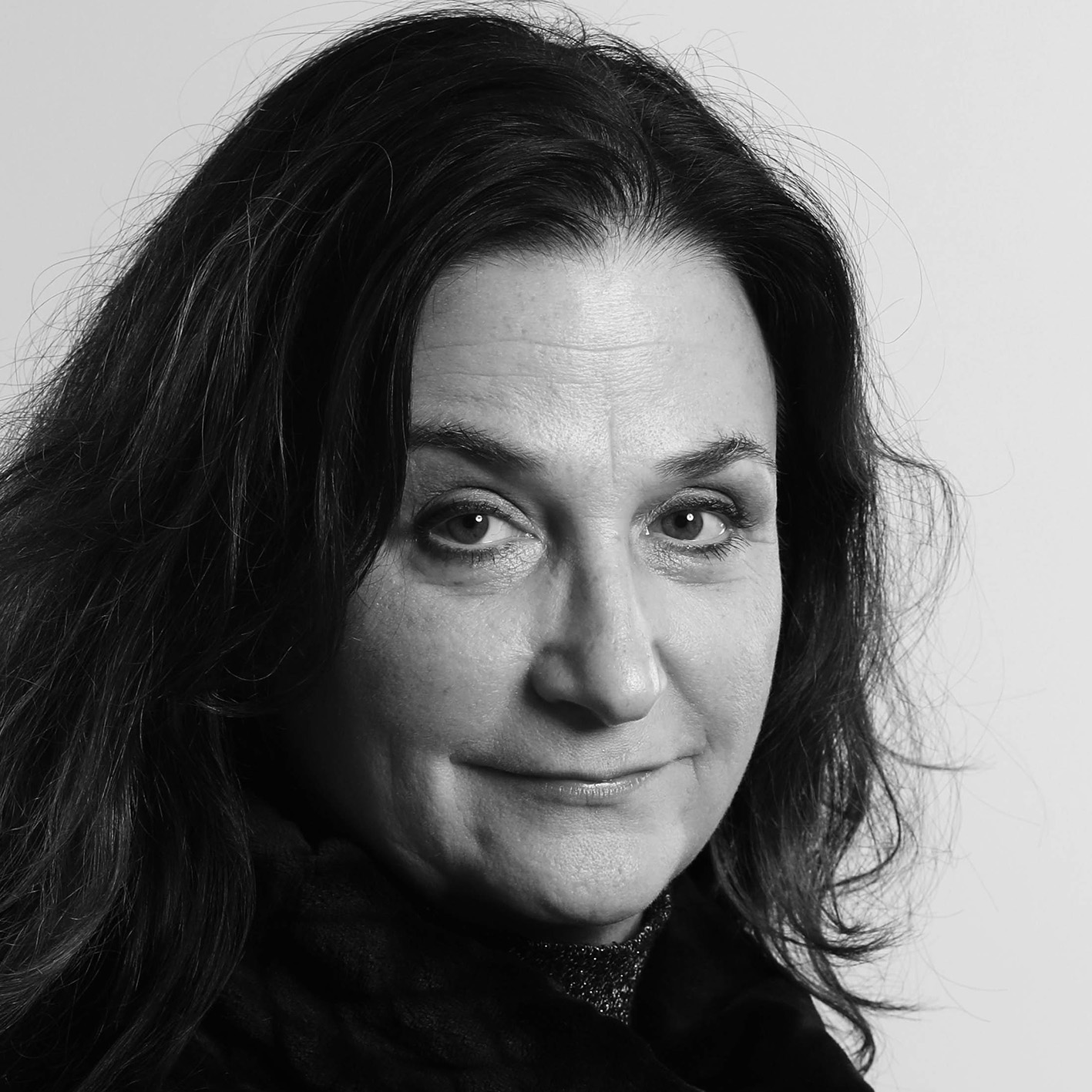It is an object that seems to have arrived from the future, even now, more than 80 years after Barbara Hepworth made it. Painted white, with an interior cavity the shade of a cloudless sky, Sculpture with Colour (Oval Form) Pale Blue and Red was carved from hardwood and strung across with contrasting twine. Half a metre long, with edges and surfaces that surprise the eye, it was shaped both by Hepworth’s sense of wartime peril and by her love of the Cornish coast around her. Today, it speaks of a moment when British abstract modernity was making waves.
The sculpture was first purchased directly from Hepworth in 1944 by the collector Helen Sutherland, who kept it for 22 years. It was then sold on to the art historian Nicolete Gray and it descended through her heirs. A year ago, it was sold to an anonymous bidder at Christie’s, until the government stepped in to delay the sculpture going overseas, placing a temporary export bar on the work in the hopes that a UK buyer might be found instead.
Now the Hepworth Wakefield – the gallery named after the sculptor and based in her West Yorkshire home town – and the Art Fund (which contributed £750,000) have launched a public appeal for £3.8m to keep the sculpture in Britain. Unless donors come forward with a final £130,000 by 27 August, the sculpture will be shipped out to its new foreign home and the British public will lose a piece of cultural history.
So far, more than 2,500 donors have raised most of the money to save the sculpture for the nation. But the clock is ticking loudly.

Barbara Hepworth working on Eidos, a similar sculpture, in 1947
It was a kind invitation from the art critic Adrian Stokes and his artist wife, Margaret Mellis, that brought the 36-year-old sculptor and her four children down to Carbis Bay in St Ives. In 1939, Stokes and Mellis opened their doors to Hepworth at a point when bringing up a family in London had started to look reckless. The wartime threat of destruction hung over the capital city with growing urgency, so she set off for the Cornish coast, along with her second husband, the painter Ben Nicholson, their five-year-old triplets, and her 10-year-old son from her marriage to John Skeaping.
By the new year, she had moved the family into a home of their own nearby. Hepworth, clearly beguiled by the landscape, would live and work near the bay for the rest of her life. Her final house and studio there, Trewyn, is now run by the Tate gallery as a popular museum and garden.
Most of the finished sculptures and maquette models that Hepworth had left in her London studio were destroyed by an incendiary firebomb in November 1940. She had brought just one piece with her to St Ives: the model for Sculpture with Colour, which was eventually finished in 1943.
“It is just a fantastic piece of carving,” says the Turner prize-winning British sculptor and Hepworth admirer Richard Deacon. “It’s very difficult to carve out a hollow from hardwood. She must have been the neighbour from hell, with her mallet and chisel, especially as she worked at night. There is an earlier, similar sculpture currently showing in Fondation Maeght in the south of France, but it is smaller and the stringing work is more evident. The resolution is better in the later work.”
The 1943 piece’s previous turn on the dais at Christie’s was in June 2008, when it went to an anonymous buyer for a mere £892,450. In a final effort to meet the current shortfall, an array of Hepworth scholars and fans, including performers Joanna Scanlan and Jenny Eclair, and the artists Anish Kapoor, Antony Gormley and Rachel Whiteread, have joined Deacon in a push to find the money required.
The strings were the tension I felt between myself and the sea, the wind or the hills
Hepworth’s work spoke strongly to Deacon from an early age, he says. As a schoolboy, he even travelled up from his Plymouth home to see her work in London. “She was interested in carving, as I already was,” he says. “I preferred her work to Henry Moore’s because she was moving more towards abstraction, and I thought that was the future. I even asked if I could interview her for our school magazine. She said no, but people have since told me I should have just turned up with a packet of fags.”
The Hepworth Wakefield hopes to acquire the sculpture, one of Hepworth’s few works to use multicoloured strings. (It already owns the precise notes the sculptor made on how to string it correctly.) The work is the personal favourite of Eleanor Clayton, the Hepworth Wakefield’s head of collection and exhibitions. “It’s fascinating,” she says. “Hepworth used geometric abstraction to make these flowing forms. She did intricate, crystalline drawings and that allowed her to make up a form that looks different from every side. It is so Hepworth.”
For Clayton, the sculpture represents a “visceral, bodily response” to Cornwall: “It must have seemed like a protective environment, in the face of that real threat of invasion.”
In 1952, Hepworth described how the sculpture had reflected the landscape around her: “The colour in the concavities plunged me into the depth of water, caves, or shadows deeper than the carved concavities themselves. The strings were the tension I felt between myself and the sea, the wind or the hills,” she wrote.
The family had initially brought a nanny down with them, but Hepworth found it increasingly hard to work. She wrote about the struggle of fitting in the odd half an hour between growing and cooking vegetables: in a letter to the art critic and curator Hartley Ramsden, she wrote. “I’ve slowly discovered how to create for 30 mins, cook for 40 mins, create for another 30 & look after children for 50 & so on through the day. It’s a sort of miracle to be able to do it.”

Hepworth outside her St Ives studio
She was still early in her career, although a first solo show had been staged in London in 1937.
“Her work wasn’t established, though, and I think she worried the war would completely derail her career,” says Clayton.
Stories of wartime scarcity today chiefly focus on bananas and fresh eggs, but for artists, the impossibility of obtaining marble, or even good wood, proved a huge obstacle. On Nicholson’s visits back to London during the blitz, he attempted to get hold of the materials that might allow his wife to continue her own work.
“There was a difficulty in getting seasoned wood – and marble was out of the question,” says Clayton. “Then, in 1942, she got a special permit for some wood and so did not have to work just in plaster for a while. The sculpture is made from plane wood and we believe she got hold of some beech at the same time.”
Deacon believes the wood was a positive choice of material for Hepworth, rather than a stand-in for marble. “I’ve never thought it was a substitute, as wood was also a designated ‘strategic material’ needed for aircraft propellers, so it would have been hard to get,” he says. “The string adds complexity to the cavity. I understand that Hepworth talked about the Cornish countryside, but I actually think of her 1947 hospital drawings, where you can see the sutures lying over gaping cavities.
“There’s a sense of a healing kind of tension. There’s often a lot of ambiguity in her work; messages of hope, although she was not at all ‘woolly’ – in fact, she was quite a hard-edged thinker.”
If enough money comes through and the work is kept in Britain, it will go on permanent display at the Hepworth Wakefield; the highlight of an exhibition planned to mark the gallery’s 15th anniversary in 2026.
To contribute to the campaign to keep Sculpture with Colour (Oval Form) Pale Blue and Red in the UK, see the Hepworth Wakefield website
Photographs by Betty Saunders, Bowness, Getty Images

